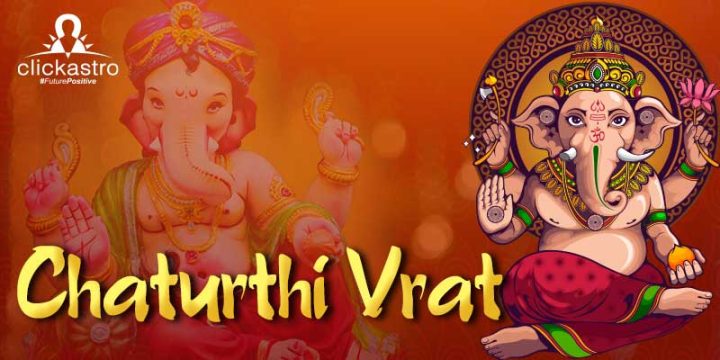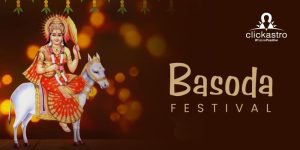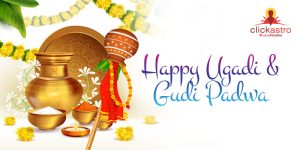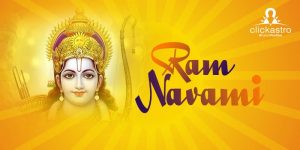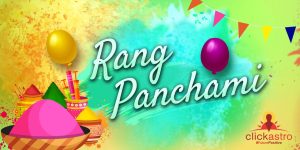Contents[hide]
Chaturthi Vrat
Lord Ganesha, who among other things is the lord of obstacles, is worshipped by observing the Chaturthi Vrat. The fourth day, or Tithi, of the lunar phase is known as Chaturthi. As a result, each month has two Chaturthi. The one that occurs during the Shukla Paksha, or waxing phase, is known as Vinayaka Chaturthi, and the one that occurs during the Krishna Paksha, or waning phase, is known as Sankashti Chaturthi. In 2023, the month of October will have two Krishna Paksha Chaturthi and one Shukla Paksha Chaturthi, thus with three Chaturthi dates in that month.January
Krishna Paksha Chaturthi (Angarki Chaturthi)January 10, 12:09 pm – January 11, 2:31 pm Shukla Paksha Chaturthi
January 24, 3:22 pm – January 25, 12:34 pm
February
Krishna Paksha ChaturthiFebruary 09, 6:23 am – February 10, 7:58 am Shukla Paksha Chaturthi
February 23, 3:24 am – February 24, 1:34 am
March
Krishna Paksha ChaturthiMarch 10, 9:42 pm – March 11, 10:06 pm Shukla Paksha Chaturthi
March 24, 5:00 pm – March 25, 4:23 pm
April
Krishna Paksha ChaturthiApril 09, 9:35 am – April 10, 8:37 am Shukla Paksha Chaturthi
April 23, 7:47 am – April 24, 8:25 am
May
Krishna Paksha ChaturthiMay 08, 6:19 pm – May 09, 4:08 pm Shukla Paksha Chaturthi
May 22, 11:19 pm – May 24, 12:58 am
June
Krishna Paksha ChaturthiJune 07, 12:50 am – June 07, 9:51 pm Shukla Paksha Chaturthi
June 21, 3:10 pm – June 22, 5:28 pm
July
Krishna Paksha ChaturthiJuly 06, 6:30 am – July 07, 3:13 am Shukla Paksha Chaturthi
July 21, 6:58 am – July 22, 9:26 am
August
Krishna Paksha ChaturthiAugust 04, 12:45 pm – August 05, 9:40 am Shukla Paksha Chaturthi (Nag Chaturthi)
August 19, 10:20 pm – August 21, 12:22 am
September
Krishna Paksha Chaturthi(Sankata Hara Chaturthi, Heramba Sankashti Chaturthi)September 02, 8:49 pm – September 03, 6:24 pm Shukla Paksha Chaturthi (Ganesh Chaturthi, Samvatsari Chaturthi Paksha)
September 18, 12:39 pm – September 19, 1:43 pm
October
Krishna Paksha ChaturthiOctober 02, 7:36 am – October 03, 6:12 am Shukla Paksha Chaturthi
October 18, 1:26 am – October 19, 1:12 am Krishna Paksha Chaturthi
October 31, 9:30 pm – November 01, 9:19 pm
November
Shukla Paksha ChaturthiNovember 16, 12:35 pm – November 17, 11:03 am Krishna Paksha Chaturthi
November 30, 2:25 pm – December 01, 3:31 pm
December
Shukla Paksha ChaturthiDecember 15, 10:30 pm – December 16, 8:00 pm Krishna Paksha Chaturthi
December 30, 9:44 am – December 31, 11:56 am
Vinayaka Chaturthi Vrat
The Shukla Paksha Chaturthi is known as Vinayaka Chaturthi. On this day, devotees fast and worship Lord Ganesha to invoke his blessings to eliminate any challenges or impediments from their path to success. On this day, devotees wake up early in the morning to have their bath before sunrise. The house is then cleaned, and an altar is erected. A special seat or pedestal is set up for Lord Ganesh, on which an idol of Lord Ganesh is placed, and puja is performed. They narrate the stories of Lord Ganesh as well as chant the Ganesha stotrams throughout the day.Sankashti Chaturthi Vrat
Sankashti Chaturthi is the Chaturthi that falls during the Krishna Paksha. Sakat Chauth is another name for it. If it falls on a Tuesday or Friday, it is considered even more auspicious. Tuesday Sankashti is also known as Angarki Sankashti. The term Sankashti means to put an end to bad times. Worshiping Lord Ganesha on this day brings the devotee happiness and prosperity. On this day, in addition to Lord Ganesha, the Moon is also worshipped.Why do we fast for Sakat Chauth?
On this day, women fast to ensure a long life for their children. It is believed that observing the Sakat Chauth fast helps alleviate children of their troubles. It aids in counteracting Mercury’s malevolent effects. Sakat Chauth Vrat brings success, prosperity, and wealth in life. It removes stumbling blocks from one’s life. The following is the story to Sakat Chauth: Once upon a time in a village, a potter’s furnace failed to generate the heat required to harden the clay pots. When he brought the problem to the king’s attention, the king consulted the palace priest, who instructed the potter to offer a bali (sacrifice) each time the furnace was to be lit. As a result, it was decreed that each family should provide one child to do the same. After a few days, it was an elderly woman’s turn to offer her only child. It was the day of Sakat Chauth. The old woman gave her son a betel nut and ‘dub ka beeda’ and told him to pray to the Lord while he was being thrown into the furnace. At the same time, the woman began to worship Goddess Sakat. The kiln was left to prepare overnight. When the potter arrived the next morning, he was astounded to see the child alive in the kiln, along with the other children who had been offered before him. Since then, women have prayed to Goddess Sakat for the safety of their children.Fasting Vidhi for Chaturthi
During Chaturthi, devotees fast in a variety of ways. Some people do not even consume water. Some people consume only fruit, water, and milk. The fast concludes after the moonrise. On the day of the fast, devotees rise up early. After having a bath, they don clean clothes. They meditate for a few minutes to achieve the necessary mental balance. An oil lamp is then lit in front of the Ganesha idol and prayers are offered. The following puja items are offered to the Lord during the puja – water, a clean piece of cloth or kalava, janeyu, akshat, kumkum, chandan, haldi, flowers, Durva grass, and incense sticks. Naivedhya (bhog) consisting of modak, which is the favourite food of Lord Ganesha, is then offered. The puja is concluded by singing the Aarti. During the fasting period, only satvik foods should be consumed. Observers must avoid consuming alcoholic beverages and non-vegetarian food. The fast is broken after sighting the moon and offering Arghya to the Moon (Chandra Dev).What is Ganesh’s favourite food?
Modak is traditionally considered to be the favourite food of Lord Ganesha. It is a sweet dumpling with grated sugar mixed with jaggery used for filling. The outer soft shell is made from rice flour or wheat flour mixed with maida flour. Modak is traditionally offered as Naivedhya while worshipping Lord Ganesha during Chaturthi. Other than Modak, Motichoor Ladoos, Puffed Rice Ladoo, Kheer and bananas are considered preferred dishes of Lord Ganesha.What foodstuffs are forbidden during the Ganesh Chaturthi fast?
You must refrain from all food, or at least from a certain type of food, when you fast. It’s crucial that devotees must only consume satvik foods during Chaturthi. It is essential to avoid fried and oily food on Ganesh Chaturthi. Avoiding sugary drinks and aerated drinks is also important. Devotees must also avoid consuming large amounts of tea and coffee. Keep in mind that eating jackfruit, beet, beetroot, onion, and garlic while fasting is forbidden. Avoid eating rock salt if you have kidney-related conditions because it contains potassium, which can be harmful. Tulsi should not be consumed or used in any Ganesh Chaturthi-related activities.Why should we not see the Moon on Ganesh Chaturthi?
Except for the day of Ganesh Chaturthi, any day is suitable for gazing at the Moon and appreciating its beauty. On the day of Ganesh Chaturthi, it’s said that gazing at the moon will cause you to be falsely accused of stealing. The term for this is Mithya Dosha. The background to this dosha is as follows: One day when Lord Ganesha was returning home in his vahana, the mice, the Moon-god or Chandra, chanced to see him. Chandra was very attractive and was proud of his appearance. To him, Lord Ganesha, with his protruded belly and an elephant head, looked funny and laughed at him. This made Lord Ganesha angry, and he cursed Chandra stating that no one would look at Chandra anymore, and those who do will be falsely accused of theft and suffer huge insults in life. Chandra was horrified at this. He fell at the feet of Lord Ganesha and asked for forgiveness. Lord Ganesha agreed to lift the curse on one condition – people can stare at the Moon on any day except the Bhadrapada Chathurthi day, during which the curse will remain. The Bhadrapada Chaturthi has since then come to be known as Ganesh Chaturthi day. It has been observed that on this day, the Sun, the Moon, and the Earth are at such angles that the moonlight which falls on Earth is negatively charged. If you do happen to stare at the Moon on Ganesh Chaturthi day, chant the following mantra:Simhah Prasenamavadhitsimho Jambavata Hatah|
Sukumaraka Marodisatva Hyesha Syamantakah||

